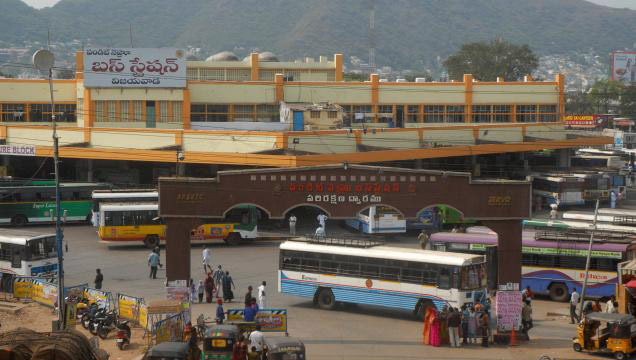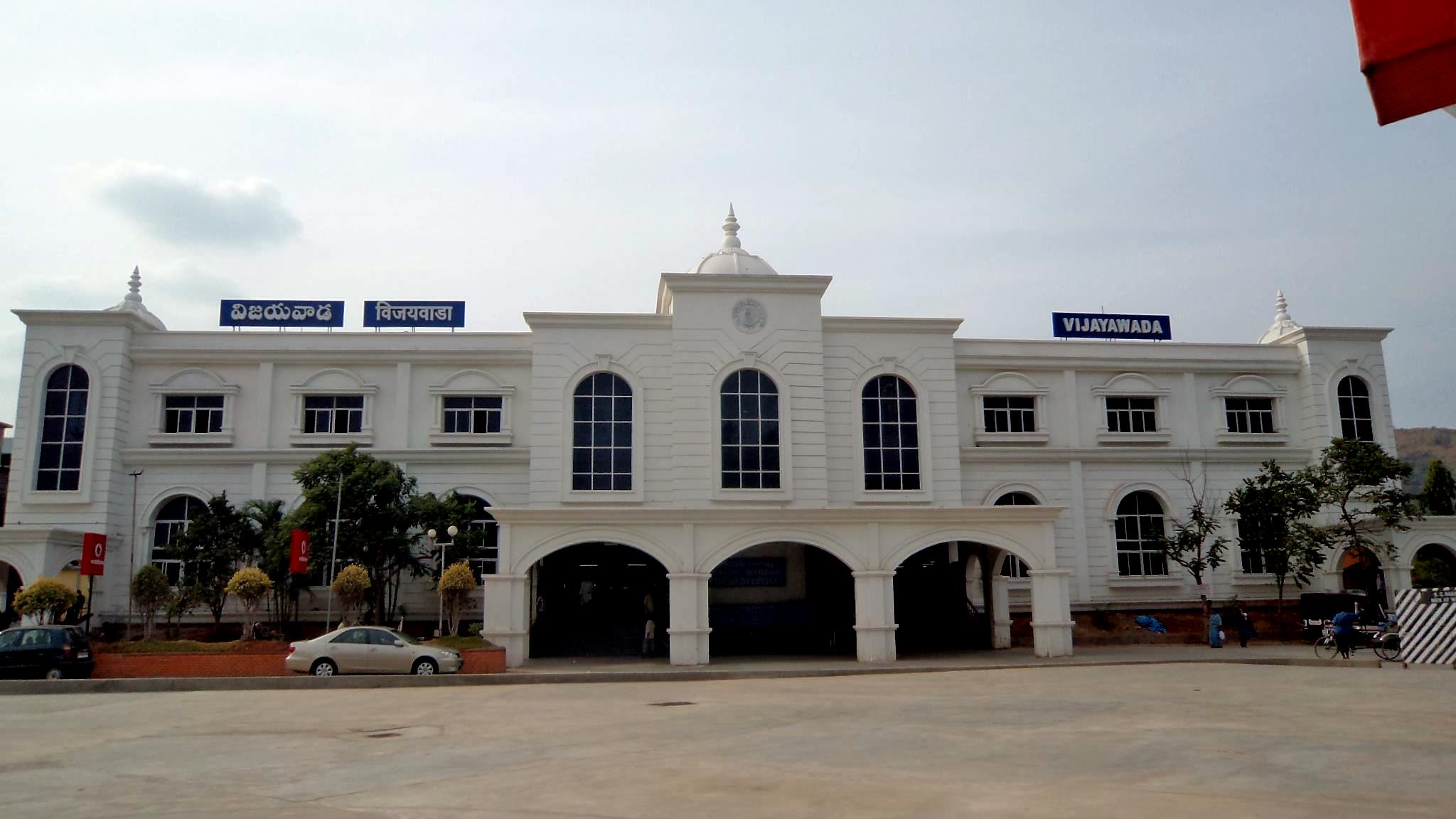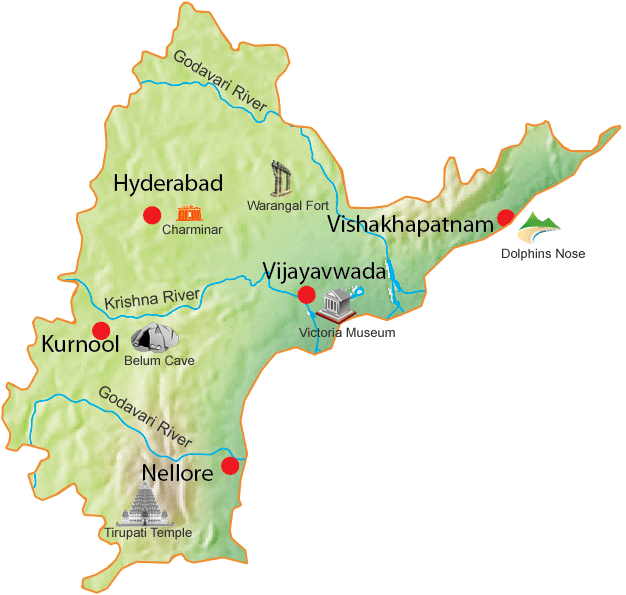Vijayawada is commonly known by its residents as Bezwada, as a way of presenting their esteem. It is the third largest city in Andhra Pradesh, India. The city is positioned on the banks of the Krishna River and circumscribed by Indrakiladri Hills towards the West and the Budameru River flowing from the North. The City has a long tail history, rolling back 2000 years old in its name – having said that it’s not a backward region when compared to modern times and the cosmopolitan cities across the nation. With the years of history, the city has hoisted upon, it’s securely instituting itself in the sociology of modern Andhra Pradesh as a center of Financial, Educational, and Medical fields concurrently. Vijayawada is not in itself developing, it is helping its inhabitants as well, being the torch bearer and a righteous leader. It’s called the Educational Sahara of Andhra Pradesh.
This blog reveals a few less known and a few interesting facts about the newfangled progressive capital of Andhra Pradesh. To discover the pastiche of natural surroundings, triumphs and antiquity of this city and around, here are few specifics to be known!
The Geographic atlas of City
The Northern, North-Western, and South-Western portions of the city are sheltered by a truncated collection of hills, while the Central, South-Western and North-Western parts are covered by luscious and productive agriculture lands with three major irrigation canals. These canals are the irrigational sources for its agricultural land and the source of drinking water for the city. The canals are patenting from the northern side of Prakasham barrage reservoir, Eluru, Bandar, and Ryves, flowing across the city. The landscape of Vijayawada is flat, with a few small to medium sized hills. These hills are part of the Eastern Ghats bowdlerized from end to end by Krishna River. Vijayawada is one of those cities in the world with dual rivers, Krishna, Budameru. Buckingham Canal originates from the south side of the reservoir. The very purpose the land is blessed with fertile and farmer friendly land is because of the Krishna River.
- The climate is tropical, with hot summers and moderate winters.
- The crowning temperature ranges 49 °C (120 °F) in months of May-June
- The winter temperature is 17-25 C.
- Average humidity is 68% and the average annual rainfall is 965 millimeters (38.0 in).
- Vijayawada gets its rainfall from both the south-west monsoon and north-east monsoon. It’s tagged “Blazewada” for its sweltering summer heat by the British
Some of the Triumphs the city is proud about-
- India’s second Prevalent Bus Station

Vijayawada Bus Station also referred as Pandit Nehru Bus Station, abbreviated as PNBS holds a record of being one amongst the largest bus station in India. The bus terminal is positioned at the southern side of the main city and it is also located adjacent to the Krishna River. This is a State Road Transport Corporation owned and maintained Bus Station which was inaugurated on the 23rd of September 1990. It’s the Busiest Bus terminal of India, followed by stations in Delhi, Chennai, and Hyderabad
- India’s largest and Asia’s second dominant Railway Junction

Vijayawada Railway Station is the second leading railway junction in India. It’s one amongst the dynamic stations of the Indian Railways with over 250 express and 150 freight trains passing through, serving 50 million passengers annually. Vijayawada Railway Division and station generate more profits than other divisions and stations in South Central Railway.
- Leading Automobile hub in Asia

Autonagar is the acronym for Jawaharlal Nehru Auto Nagar Industrial Estate. This industrial parkland sited on the Eastern flank of Vijayawada. This industrial estate holds the vanity of being one amidst the major hubs for the auto industry in the entire Asia. The Autonagar was inaugurated in the year 1966 and it is also the prior cohesive AP’s first Autonagar. The place is actually a cluster that delivers service activities with a view to benefit the automobile industry.
These were a few of many triumphs the city takes pride in, the other famous, historical and scenic segments the city is known for are its tourist destinations that include:
- Prakasham Barrage: Prakasam Barrage is 1223.50 meters long erected across the River Krishna. Prakasham Barrage is the source that helps in the irrigation of the agricultural lands in Andhra Pradesh. The Barrage serves as a road bridge as well. Prakasham Barrage has created a panoramic lake view – a treat worth watching for nature admirers. Three of its canals that cross the city give Vijayawada a Venetian look.
- Kanaka Durga Temple: The temple is one amongst the most popular temples in Andhra Pradesh, located on Indrakeeladri and is a major travel attraction in Vijayawada. The temple is overseeing the city as well as the River Krishna. It was built in 12th century by Maharaja Poosapati Madhava Varma. Kanaka Durga is believed to be the governing deity of Vijayawada. The self-revealed divinity at the temple is assessed to be prevailing and thereby a pious and religious spot.
- Gandhi Hill: The first memorial for Gandhi was built with seven stupas in the country was located on the hills of Vijayawada and hence the name Gandhi Hills. The 52 ft. (16 m) stupa was divulged to the public on 6 October 1968 by the President of India Dr. Zakir Hussain. Gandhi Memorial Library, Sound and Light Show about Mahatma Gandhi’s life and a planetarium are a few charismas for the tourists.
- Mogalarajapuram Caves: Around 11 kilometres from the city of Vijayawada are these ancient caves exhumed which have its place in 5th century A.D. The caves are presumed to be the first of their kind in South India. It’s said that the idols of Lord Nataraja, Vinayaka & Arthanareeswara are engraved in the caves; however there aren’t any statues available here.
- Victoria Museum: A place that takes you back in time. Victoria Museum has a cautiously conserved assortment of sculptures, paintings, idols, weapons, cutlery, and inscriptions. The highlight of the museum is one its gigantic, vivacious Buddha Monument which was taken on board from Alluru.
- Kondapalli Forts: The Fort find places in the 7th century. Erected on a hill, the three-storied fort offers a spectacular outlook of the “Land of Victory”. The rock tower situated in the fort is grand. The Fort had been a quiet watcher that perceived the rise and fall of several kingdoms.
- Rajiv Gandhi Park: Created by the Vijayawada Municipal Corporation with keen interest and immense care is taken to keep the park clean and well maintained. This park welcomes the tourists at the entrance of the city with its impressive horticultural network. A mini zoo and a musical water fountain are attractive add-on and an ideal way to spend a pleasant evening.
- Gunadala Matha Monument: As per the prevalent evidence is apprehensive, Reverend Arlati who was then rector of St Mary’s Church, established an attractive sculpture of Our Lady in 1825 and consecrated in 1971. It is now popularly known as St. Mary’s church. Since then, the Feast of Our Lady of Lourdes became an annual event here, attended by the public. The church is situated on a hillock on the eastern side of Vijayawada.
- Bhavani Island: Possibly one of the largest islands on the River Krishna. Bhavani Island is in Krishna River adjacent to the city of Vijayawada. Andhra Pradesh Tourism is in the process of renovating 133-acre Island into an eye-catching holidaymaker and a riverfront resort. The island comprises of cottages to stay in and a few worthy adventure and fun sports which include fishing as well. The journey to the island by boat is enjoyable.
- Mangalagiri: The literal meaning of Mangalagiri is the “Auspicious Hill”. Mangalagiri is one amongst eight protuberant sacred places in India. The hill is nearby the city which is a famous pilgrim center for its Panakala Lakshmi Narasimha Swami Temple that is amongst the lankiest temple towers of the India. Mangalagiri is also known for its traditional textiles.
These are some of the few tourist spots that would entice tourists and wouldn’t let them be disappointed even for a single moment for visiting the city. Vijayawada is culturally rich and richly picturesque. Majestic ancient splendor is still flourishing across the city, well maintained by the municipal corporation. The city has risen and fulfilled the existing necessities by delivering reasonably priced donations to the development of the state. It is historically strong beautiful and technologically authoritative place that requires you to spend a substantial amount of time. The tourist places in Vijayawada lets you familiarize the experience and enjoy the antiquity, traditions and technological triumphs of the city in its fullness. Another feather added to its Crown- the City of Historic, the Economic and Cultural connotation is made an astonishing comeback to retrieve its Grandeur with the proclamation as the Capital of Andhra Pradesh State. Pay a visit and explore more of Vijayawada! Happy Holidays
References: business-standard.com, vijayawadas.blogspot.in, southreport.com, goroadtrip.com, transindiatravels.com, mapsofindia.com

